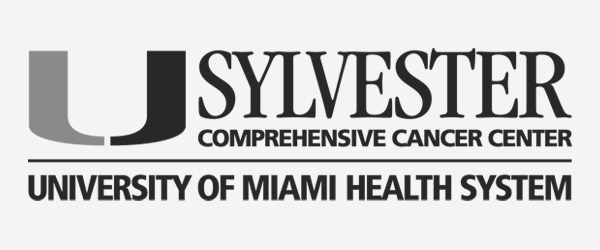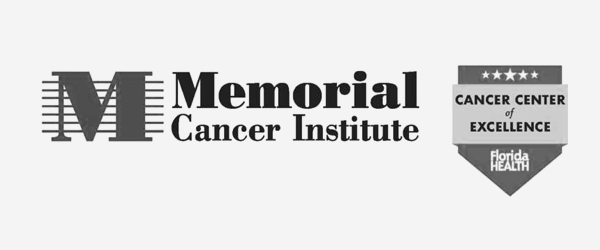Term Glossary
Term Glossary
Aesthetic flat closure:(or “flat closure”) is post-mastectomy chest wall reconstruction. After the mastectomy to remove the breast tissue, additional work is often required to smooth out any lumps and bumps and trim any excess skin to restore an optimal chest wall contour with a clean symmetric incision closure.
Pigmented skin surrounding the nipple
Breast Cancer
Affecting both the right and left sides of the body.
Bilateral mastectomy or Bilateral prophylactic (preventative) mastectomy.
BRCA Genes
BRCA1 and BRCA2 are two genes that are important to fighting cancer. They are tumor suppressor genes. When they work normally, these genes help keep breast, ovarian, and other types of cells from growing and dividing too rapidly or in an uncontrolled way.
Sometimes a change or mutation occurs in the BRCA genes that prevent them from working normally. This raises a person’s risk for breast, ovarian and other cancers. Learn more about BRCA gene mutations.
Breast augmentation — also known as augmentation mammoplasty — is surgery to increase breast size. It involves placing breast implants under breast tissue or chest muscles. For some women, breast augmentation is a way to feel more confident.
A surgical procedure in which both of the ovaries and the fallopian tubes are removed. This surgery is usually performed during a hysterectomy, in which a woman’s uterus is removed, but not always.
The formation of a “capsule” of scar tissue around any kind of implant (medical or cosmetic) is a normal part of the healing process. The body automatically reacts to any foreign object it detects within it and attempts to isolate said object by creating a barrier of scar tissue around it.
Cancer previvors are individuals who have a predisposition to cancer but who haven’t yet had the disease. This group includes people who carry a proven inherited mutation, have a family history of cancer that defines them as high risk, or have another predisposing factor.
A previvor is someone who has an elevated predisposition to being diagnosed with cancer due to a risk running through their family.
Bilateral prophylactic mastectomy is the removal of both breasts to prevent breast cancer. Bilateral prophylactic mastectomy lowers the risk of breast cancer in women at high risk by at least 90 percent
Surgical removal of the fallopian tubes.
Breast revision is a surgical procedure designed to correct unsatisfactory results from a previous breast enhancement surgery. This revision surgery can improve the shape, size, projection, and symmetry of the breasts.
A sentinel node biopsy is a diagnostic procedure to test if cancer has spread beyond the original tumor. During the procedure, healthcare providers remove small organs called sentinel nodes and send them to a lab to test for cancer cells. The results help providers determine the most appropriate treatments.
TRAM stands for transverse rectus abdominis, a muscle in your lower abdomen between your waist and your pubic bone. A flap of this skin, fat, and all or part of the underlying rectus abdominus (“6-pack”) muscle are used to reconstruct the breast in a TRAM flap procedure.
A tissue expander is an empty breast implant that your surgeon will fill with normal saline over about 6 to 8 weeks until it reaches the breast size that you and your surgeon decided on.
A transaxillary incision is made in the armpit, in the natural fold that exists there.
A total vaginal hysterectomy is a surgical procedure during which a woman’s uterus and cervix are removed through the vagina.
A transvaginal ultrasound, or endovaginal ultrasound, is a safe and straightforward procedure that doctors use to examine the internal organs in the female pelvic region.
Aesthetic flat closure:(or “flat closure”) is post-mastectomy chest wall reconstruction. After the mastectomy to remove the breast tissue, additional work is often required to smooth out any lumps and bumps and trim any excess skin to restore an optimal chest wall contour with a clean symmetric incision closure.
Pigmented skin surrounding the nipple
Breast Cancer
Affecting both the right and left sides of the body.
Bilateral mastectomy or Bilateral prophylactic (preventative) mastectomy.
BRCA Genes
BRCA1 and BRCA2 are two genes that are important to fighting cancer. They are tumor suppressor genes. When they work normally, these genes help keep breast, ovarian, and other types of cells from growing and dividing too rapidly or in an uncontrolled way.
Sometimes a change or mutation occurs in the BRCA genes that prevent them from working normally. This raises a person’s risk for breast, ovarian and other cancers. Learn more about BRCA gene mutations.
Breast augmentation — also known as augmentation mammoplasty — is surgery to increase breast size. It involves placing breast implants under breast tissue or chest muscles. For some women, breast augmentation is a way to feel more confident.
A surgical procedure in which both of the ovaries and the fallopian tubes are removed. This surgery is usually performed during a hysterectomy, in which a woman’s uterus is removed, but not always.
The formation of a “capsule” of scar tissue around any kind of implant (medical or cosmetic) is a normal part of the healing process. The body automatically reacts to any foreign object it detects within it and attempts to isolate said object by creating a barrier of scar tissue around it.
Cancer previvors are individuals who have a predisposition to cancer but who haven’t yet had the disease. This group includes people who carry a proven inherited mutation, have a family history of cancer that defines them as high risk, or have another predisposing factor.
A previvor is someone who has an elevated predisposition to being diagnosed with cancer due to a risk running through their family.
Bilateral prophylactic mastectomy is the removal of both breasts to prevent breast cancer. Bilateral prophylactic mastectomy lowers the risk of breast cancer in women at high risk by at least 90 percent
Surgical removal of the fallopian tubes.
Breast revision is a surgical procedure designed to correct unsatisfactory results from a previous breast enhancement surgery. This revision surgery can improve the shape, size, projection, and symmetry of the breasts.
A sentinel node biopsy is a diagnostic procedure to test if cancer has spread beyond the original tumor. During the procedure, healthcare providers remove small organs called sentinel nodes and send them to a lab to test for cancer cells. The results help providers determine the most appropriate treatments.
TRAM stands for transverse rectus abdominis, a muscle in your lower abdomen between your waist and your pubic bone. A flap of this skin, fat, and all or part of the underlying rectus abdominus (“6-pack”) muscle are used to reconstruct the breast in a TRAM flap procedure.
A tissue expander is an empty breast implant that your surgeon will fill with normal saline over about 6 to 8 weeks until it reaches the breast size that you and your surgeon decided on.
A transaxillary incision is made in the armpit, in the natural fold that exists there.
A total vaginal hysterectomy is a surgical procedure during which a woman’s uterus and cervix are removed through the vagina.
A transvaginal ultrasound, or endovaginal ultrasound, is a safe and straightforward procedure that doctors use to examine the internal organs in the female pelvic region.
“The thing is, that until you’ve experienced this for yourself, there’s no way to empathize or understand the challenges that come along with a diagnosis of this magnitude – The thing is, that until you’ve experienced this for yourself, there’s no way to empathize or understand the challenges that come along with a diagnosis of this magnitude – especially at such a young age, and in that stage of life,”
Tracy said. “It’s so important to find comfort and support in a group of women who share such a strong experiential bond.
“The thing is, that until you’ve experienced this for yourself, there’s no way to empathize or understand the challenges that come along with a diagnosis of this magnitude – The thing is, that until you’ve experienced this for yourself, there’s no way to empathize or understand the challenges that come along with a diagnosis of this magnitude – especially at such a young age, and in that stage of life,”
Tracy said. “It’s so important to find comfort and support in a group of women who share such a strong experiential bond.
BRCAStrong Blog
BRCAStrong Blog
Cancer is in my genes – literally and figuratively
Tracy Posner2024-04-09T02:19:43+05:00April 8th, 2024|
Cancer is in my genes - literally and figuratively. When I was in college both my paternal aunt and my paternal grandmother passed away - 3 years apart, both in
My Diagnosis of breast cancer and testing positive for BRCA 1 with no family history.
Tracy Posner2024-04-01T22:20:50+05:00April 1st, 2024|
Some mornings I wake up thinking or maybe its me pretending to be just a normal person, but then I put my fingers through my hair and it all flashes
BRCA_WPadmin2024-03-26T04:04:24+05:00March 26th, 2024|
Hi, I am Adriana a young breast cancer survivor. I was diagnosed with TRIPLE NEGATIVE BREAST CANCER and with the genetic mutations BRCA1 & PMS2 (lynch syndrome), in March 2020. I found













